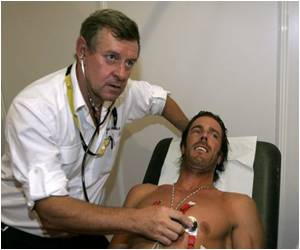Highlights:
- Cardiac resynchronization therapy with defibrillator (CRT-D) can improve heart function in certain patients with non-left bundle branch block (non-LBBB)
- There are three types of conduction disorders namely left bundle branch block (LBBB), right bundle branch block (RBBB) and non-specific intraventricular conduction delay (NICD). The latter two are collectively referred to as non-left bundle branch block (non-LBBB)
- Although non-LBBB patients with symptoms of heart failure can be given CRT-D, there is not enough evidence about its effectiveness. However, this new study proves that CRT-D can improve heart function
Read More..
Can CRT-D Improve Heart Function In Patients with Non-LBBB?
- The study team wanted to determine whether CRT-D could also help non-LBBB patients with heart failure
- Kawata said, "In patients with LBBB, the longer the QRS, the more likely you are to respond to CRT. We wanted to find out whether this was also true in patients with non-LBBB conduction disorders."
- Kawata and his team analyzed data from the NCDR ICD Registry, which is considered the national standard to define criteria patient selection, care and prognosis in patients receiving ICD treatment
- Patients with RBBB and NICD were divided into two groups according to the length of their QRS, i.e., waves on the ECG that give information about the time taken for the heart impulse to travel through the ventricles. If the ECG shows a QRS complex measuring greater than 120 milliseconds, it is suggestive of a conduction defect
- The team compared the heart function in patients with cardiac resynchronization therapy with defibrillator (CRT-D) versus traditional, implantable cardioverter defibrillator (ICD)
- Among 5,954 elderly Medicare patients diagnosed with non-specific intraventricular conduction delay (NICD) or RBBB treated with a defibrillator, the research team found patients with NICD and a QRS of more than 150 milliseconds showed the best response to CRT-D
- In the group of NICD patients, CRT-D demonstrated a decreased risk of death, readmission to the hospital for any cause, or heart-related causes, in comparison to a similar group of patients treated with ICD. However, in patients with RBBB, CRT-D did not show a better response compared with ICD, regardless of the length of the QRS interval
The authors feel that more research is required to determine if certain groups of RBBB patients might also benefit from CRT-D.
CRT-D and ICD
- A traditional ICD is implanted under the skin just below the collarbone. It comprises a pulse generator and wires, called leads. The leads connect the pulse generator to specific sites in the heart. The primary goal of an ICD is to prevent life-threatening fast rhythms or tachyarrhythmias and restore normal beating of the heart.
- A CRT-D system includes an additional third wire or lead connecting to the left ventricle so it can help both ventricles beat (biventricular pacemaker) synchronously and thus pump blood more efficiently. Patients with heart failure and with an increased risk of sudden cardiac death are more likely to benefit from a CRT-D.
References:
- Cardiac Resynchronization Defibrillator Therapy for Nonspecific Intraventricular Conduction Delay Versus Right Bundle Branch Block - (http://dx.doi.org/10.1016/j.jacc.2019.04.025)
Source-Medindia















